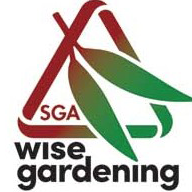How We Rate Garden Chemical Products

The garden product assessment and rating process is dedicated to continuous improvement of methodology to accurately assessing risks of chemical garden products and to openly and honestly informing their users.
What Risks Do We Assess?
Products and their ingredients are assessed for risks to:
- Humans and other mammals
- Bees and other beneficial insects
- Birds
- Fish and other aquatic organisms
- Frogs
- Earthworms
Other properties of the ingredients are assessed for:
- Mobility i.e. the likelihood that they will be transported into streams or other waterways during irrigation or rainfall
- Persistence in soil
- Whether they have been reported as carcinogenic, endocrine disruptors or genotoxic.
What data underpins how we rate garden chemical products?
Criteria for data use
To be used in the rating system, data needs to be:
- Evidence-based, i.e. scientifically assessed or estimated
- Publicly available via websites and other documentation
- Independent and impartial
- Reputable, i.e. academic research institutions and government instrumentalities whose task it is to ensure registration of products, setting safety standards and protecting public and environmental standards.
Data Sources
Data is obtained from a wide variety of publicly accessible sources, including (but not limited to):
- Risk assessments of product ingredients in the Pesticide Properties DataBase (PPDB) created by the Agriculture & Environment Research Unit (AERU) University of Hertfordshire, Hertfordshire, UK. These assessments include both active ingredients and others that may also present in the product if known.
- The Standard for the Australian Uniform Scheduling of Medicines and Poisons (SUSMP) rating,
- Information from the Australian Pesticides and Veterinary Medicines Authority (APVMA),
- Environmental Protection Authority USA’s Toxnet database , in particular https://pubchem.ncbi.nlm.nih.gov/ and https://pubmed.ncbi.nlm.nih.gov/
- Product labels and manufacturers’ websites – too many to list. How much information is available there varies greatly.
- Safety Data Sheets (SDSs) provided by the manufacturer. However, ingredients that are not considered to be those that are active for the product’s purpose are sometimes not listed by the manufacturer. These ingredients are often described as “secret” or “other” without being named. We assess every named ingredient and where there is a lack of information on product contents we have indicated that with a particular symbol. (See Table of symbols below) .
Assigning Scores
Our assessment of products uses a “point score” system to assess the risks of both overall product features and of ingredients. Higher risk levels yield higher numerical point scores. A final assessment converts these scores into a range of stars starting at one star for the highest numerical score, increasing to six stars for products with the lowest risk scores (see below).
Overall Product Features
These are assessed from the answers to the questions in table 1.
Table 1
| Questions about Product Features | Interpretation |
| What is the Uniform Scheduling of Medicines and Poisons (SUSMP) rating? i.e. Schedule 5, 6 or 7* | Higher Schedule ratings indicate more toxic chemicals |
| Is the product made from non-synthesised materials? | Products that contain natural ingredients are given lower risk scores than those that are produced by chemical synthesis, often from fossil fuels. This is not an assessment of the chemical impact of the ingredient, rather an assessment of the lower embedded energy in producing the materials. |
| Is the product pre-mixed and ready to apply? | Pre-mixed products minimize the risk of inadvertent spills i.e. less chance of exposure to high concentrations of ingredients and encourage the storage and use of more manageable quantities of chemicals |
| Is the product an aerosol formulation ? | Delivery as an aerosol increases the risk of exposure to toxic material |
| Is the product a dust formulation? | Delivery as a powder increases the risk of exposure to toxic material |
| Is packaging well designed and robust in relation to its Schedule Heading? | An indicator of the capacity of the packaging to prevent inadvertent exposure |
| Is the product a repellent or deterrent in its action? | These have lower risk due to lower toxicity of such chemicals |
| Is the product a biological control? | These are living organisms and do not involve manufacture requiring use of energy possibly of fossil fuels. In many cases, these are biological species that would normally be found in the garden. |
- Poisons with a rating of S7 cannot be sold for domestic use.
Ingredients
The scoring system for ingredients is based on the assessment used in the Pesticide Properties DataBase (PPDB) created by the University of Hertfordshire, Hertfordshire, UK. Each ingredient is assessed as either no or low risk, medium risk or high risk as shown in Table 2 and points are allocated to these risks.
Table 2
| Question | None or Low | Moderate | High |
| What is the level of risk associated with this ingredient? | No symbol | Open Symbol | Solid Symbol |
Note: for soil mobility, persistence and if an ingredient has been reported as a human carcinogen, endocrine disruptor or genotoxic compound, it is shown without a quantitative rating, i.e. with a closed symbol.
Risk is assessed for each item shown in table 3 below:
Table 3. Risks and their Symbols
| Risk to Species or Property | High Risk | Moderate Risk |
| Humans | H | h |
| Other mammals (e.g. pets) | A | a |
| Bees & other beneficial insects | B | b |
| Worms | C | c |
| Birds | D | d |
| Fish | E | e |
| Frogs | F | f |
| Other aquatic species (Invertebrates, Crustaceans, Plants) | G | g |
| Other Characteristics | ||
| Mobile in soil | M | |
| Persistent in soil | P | |
| Carcinogenic, an endocrine disruptor, or genotoxic | S | |
| Poison S7 | Z | |
| Biological Control | W | |
| No ingredients were listed for the product | O | |
| No risk information available for ingredients from currently available data sources |
– |
|
| The product is discontinued | ! | |
| Other Choices: A Wise Gardening option | Y | |
| The ingredients are still under investigation | ? | |
If a product contains multiple ingredients that have different levels of risk for any of its properties the score for the ingredient with the highest risk is assigned. For example, a product with 3 ingredients, one with High impact, one with Low impact and one with no impact, is considered to have High impact. In order to avoid inaccurately assigning a “No risk” score to a product when information about ingredients is not available, both High and Moderate impacts increase the product “score” while Low or No impact do not affect the product score.
Some products with similar ingredient compositions may achieve different ratings because the chemical forms of ingredients may differ and have different associated risks.
Once an overall score is assigned to a product, the score is converted to a simple-to-visualize Star rating where products with low numerical scores receive a greater number of stars. One star is assigned to products with the highest scores and 6 stars to products with the lowest scores.
Where the product is an S7 poison, 0 (zero) stars are assigned to indicate the product is outside our normal rating system.
If no ingredients are listed for a product (symbol “O”) or no risk information for ingredients is available (symbol “-“), a valid star rating cannot be assigned because of lack of information upon which a rating can be based. For these products, a star rating is replaced by the symbol for a question mark “?“. We are working on obtaining this information from manufacturers and chemical databases.
Where a product is discontinued, if we have existing ingredient information from before the product was discontinued, we provide a risk score.
The assessment system, at this stage, does not include Life Cycle Analysis (e.g. detail of how much energy is used in making the product) including product packaging and whether the product contains natural or synthesized chemical ingredients.
Note about ingredient concentrations
The manufacturer considers the concentrations of ingredients in their assessment of the product, for example in determining the SUSMP (Poison) rating, however in our assessment we do not consider the concentrations because no assumptions can be made about how much of the product is used, how carefully it is used or whether it has become degraded or has been concentrated by evaporation during storage. WiseGardening considers the risk of the pure ingredients and is thus a conservative assessment.
Disputed ingredient risks
The risks associated with some ingredients are disputed by different studies around the world. Glyphosate is an example of particular interest – see our article on this subject. In such cases SGA has used the current scientifically accepted data, but it recognizes that as further investigations of these ingredients are done, our ratings may change as we regularly update WiseGardening.
Inclusion of Non-Chemical Approaches
WiseGardening includes a range of non-chemical approaches to address problems with garden pests, disease or weeds – these are included as “products”. All information on these approaches has been obtained from publicly available sources. We identify these as “Better WiseGardening Choices” for particular product types.
Updating Ratings
All products are periodically re-assessed to ensure that any changes to formulations, packaging or active ingredients have been accounted for. Information about ingredients is updated quarterly through the PPDB database and by literature searches for missing ingredient information as required.
Please remember: the risks documented here and used for rating are important if products are used unwisely. Always use products strictly according to manufacturers’ instructions on labels and associated documentation. If you have further questions about a specific product you should contact the manufacturer and/or retailer.
SGA does not endorse the use of any particular chemical garden products, whether or not they are included in WiseGardening. This information is provided so YOU can make your decisions wisely.
Significant Contributors
- Dr. Sharron Pfueller (biochemistry, cell biology, environment, sustainability)
- Dr. Colin Allison (chemistry, environment, climate change, database development)
- Angelo Eliades (horticulture, permaculture, toxicology)
- Bridey Oliver (horticulture)
- Jane Rollinson (horticulture, information mapping)
- Michelle Dyason (natural methods of pest control)
- Dr. Paul Gibson-Roy (pioneering work on WiseGardening’s predecessor, the Garden Product Guide)
In 2019, WiseGardening development was supported by funding from the Telematics Trust as a project to provide community educatio
